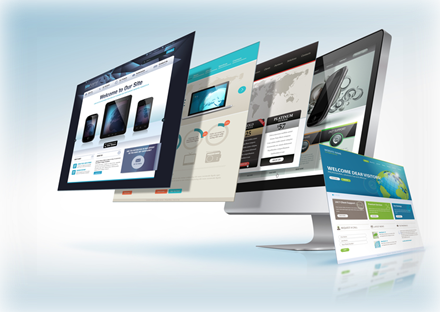The homepage is one of the trickiest pages to design for a website, because it must perform so many tasks. It is also the one page that most people will see when they visit your site, so it is essential to get the design right. A good homepage design:
 Serves as a jumping off point to deeper content
Serves as a jumping off point to deeper content- Highlights your most important products and services
- Communicates exactly what it is your business does
- Engages and provides immediate interest to visitors
- Provides a stand-out reason for visitors to engage
- Provides visitors with a sense of trust and authority
With so many competing goals, it’s easy for a homepage to become muddled, confusing and ineffective. Fortunately, there are multiple ways we can improve clarity and increase engagement on the homepage, thereby improving overall conversions.
Use a Homepage Design with Content Themes
A common problem when your business offers multiple products or services is how to make sure that people don’t miss out on any of the options your company provides. Cramming all of your products and services onto the homepage might placate the various departments in your company, but it will lead to a frustrating and overwhelming experience for your website’s visitors.
A better option is to create groups or themes for your content, and place a brief summary under each category. There’s no one way to organize your content themes, and depending on your business you may find it useful to categorize via:
- Type of product/service
- Products/Services by industry
- Product/Service packages
When deciding how to group your content, place emphasis on how your customers categorize what you do, versus how you categorize internally. For example, if clients often have a package of services you provide, organizing by type of service will be less useful.
Don’t Distract with Too Much Movement
The best homepage designs clearly communicate value from the first glance. Having multiple sliders or animated menus can detract from your messaging, and confuse your visitors. Here are some best practice guidelines when it comes to sliders and animation:
- Use sliders with caution—the speed at which sliders transition can easily be too fast or too slow for a large section of your website’s visitors. Be sure to look at them on multiple computers and platforms as speed will vary. You may not even need sliders if you can find a single hero image to convey your value proposition.
- Use animations with purpose— people expect movement to mean something.
- Good uses of animation
- Explaining a concept
- Updating a list
- Highlighting a user-made selection
- Confirming a checkbox
- Adding products to a cart
- Loading screens
- Good uses of animation
In general, opt for animation on your homepage only when the purpose of the animation is immediately clear and serves to communicate a specific message.
Plan Your Pathways
Your homepage may be the first page a website visitor lands on, but not always. You may have other pages of your site that rank well organically for Google or BING searches, and those may be the page’s people enter the site from.
When optimizing conversion pathways—the order of pages visited that results in a lead or a sale—research the pathways that website visitors take on your site most often and use that knowledge to inform which links belong on your homepage.
Identifying the pages that people use to inform a conversion will help you to prioritize between content that resides within the same category.
Use Featured Spaces Strategically
The prime real estate at the top of your homepage, directly beneath the navigation, should be reserved for your best pitch to your potential customers. In general, this means that blog posts, social media posts, and other similar content should be lower on the page.
This also means that during sales, special events, and other time-sensitive opportunities, your homepage design should prominently indicate the limited-time offer in this prime space. If your business regularly offers new or updated products and services, your homepage content should be changed regularly to reflect these new items as well.
Quick Summary
Here’s our quick checklist for optimizing your homepage design:
- Organize deeper content into categories or themes
- Use movement strategically
- Make your most valuable links prominent
- Keep limited-time offers and special events front and center
- Put the content that’s most valuable to visitors at the top of the page
If you need help getting an unruly homepage under control, we’re here to help. Fill out a quick contact form and we’ll help you create a homepage that will showcase all your company has to offer without overwhelming your website visitors.
